Impact of diversity of ownership scale on social, economic and environmental outcomes
Report on the impact of diversity of ownership on the socioeconomic outcomes for rural areas.
Appendix 4 - Case Study Selection
Altitude / topography
Elevation statistics for each of the 31 option parishes were calculated from elevation data, and Figure 20 reveals the minimum, maximum, range and mean elevations by parish. The findings show broadly similarities between the parishes within each geographic set.
Figure 20: Elevation Statistics for Option Parishes - anonymised
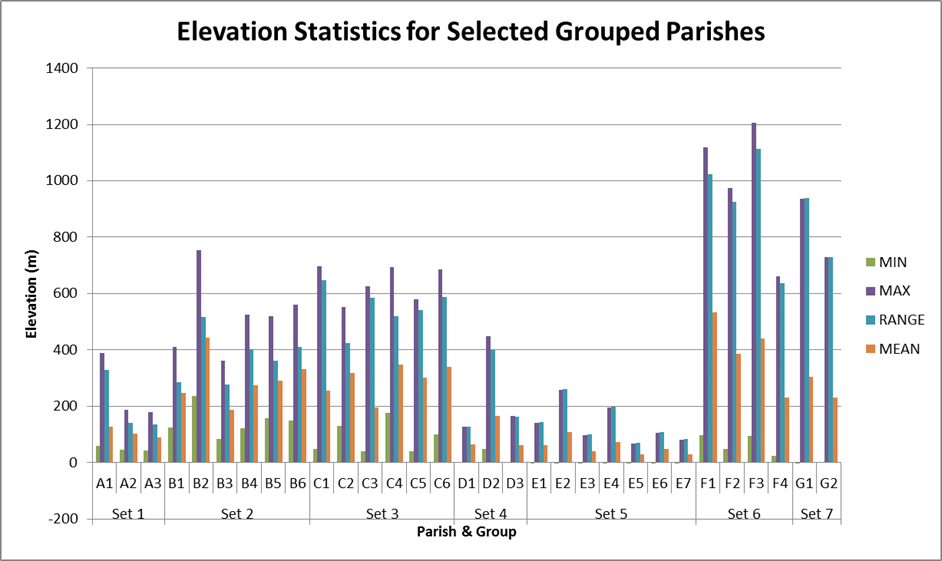
Land Capability for Agriculture
The Macaulay Land Capability for Agriculture ( LCA) classification [57] was assessed for every parish using an improved hybrid LCA layer. [58] The proportion of total land in each LCA category is provided for each parish in Figure 21, where:
- LCA 1 is land capable of producing a very wide range of crops
- LCA 2 is land capable of producing a wide range of crops
- LCA 3 is land capable of producing a moderate range of crops
- LCA 4 is land capable of producing a narrow range of crops
- LCA 5 is land capable of use as improved grassland
- LCA 6 is land capable of use as rough grazing
- LCA 7 is land of very limited agricultural value
The LCA analysis helped identify, within the geographic sets, which parishes were closely similar in terms of land capability proportions (remembering that the selection process aims to match unfragmented and fragmented land ownership parishes within sets).
Figure 21: LCA Area (as % of Parish) for Option Parishes - Anonymised
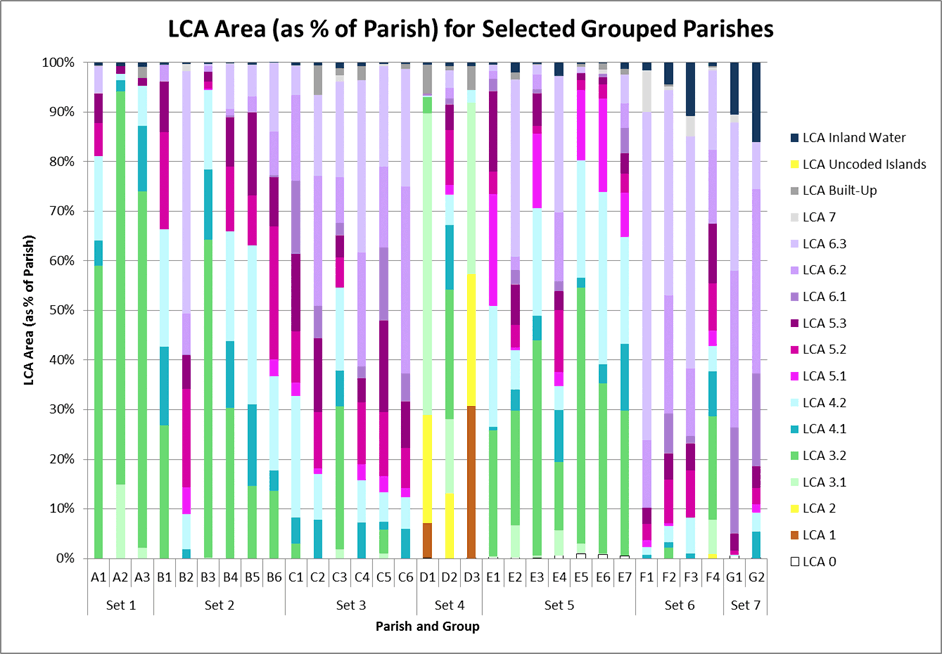
Land Cover of Scotland ( LCS88)
The option parishes were analysed using the Land Cover Scotland 1988 ( LCS88) [59] data using two different grouping levels of LCS88 classes:
- A 29-category classification used in the LCS88 label field.
- A 10-category classification developed by the James Hutton Institute [60] that was considered more appropriate for this project.
Using the 10-category LCS88 list, Figure 22 shows the proportion of each category of land cover for all parishes. This helped to ensure that the parishes selected were not significantly different in the types of land use that may have impacted on the local outcomes. Whilst there was variation amongst sets, there is also a lot of similarity between many of the option parishes within sets.
Figure 22: LCS88 Area (as % of Parish) for Option Parishes
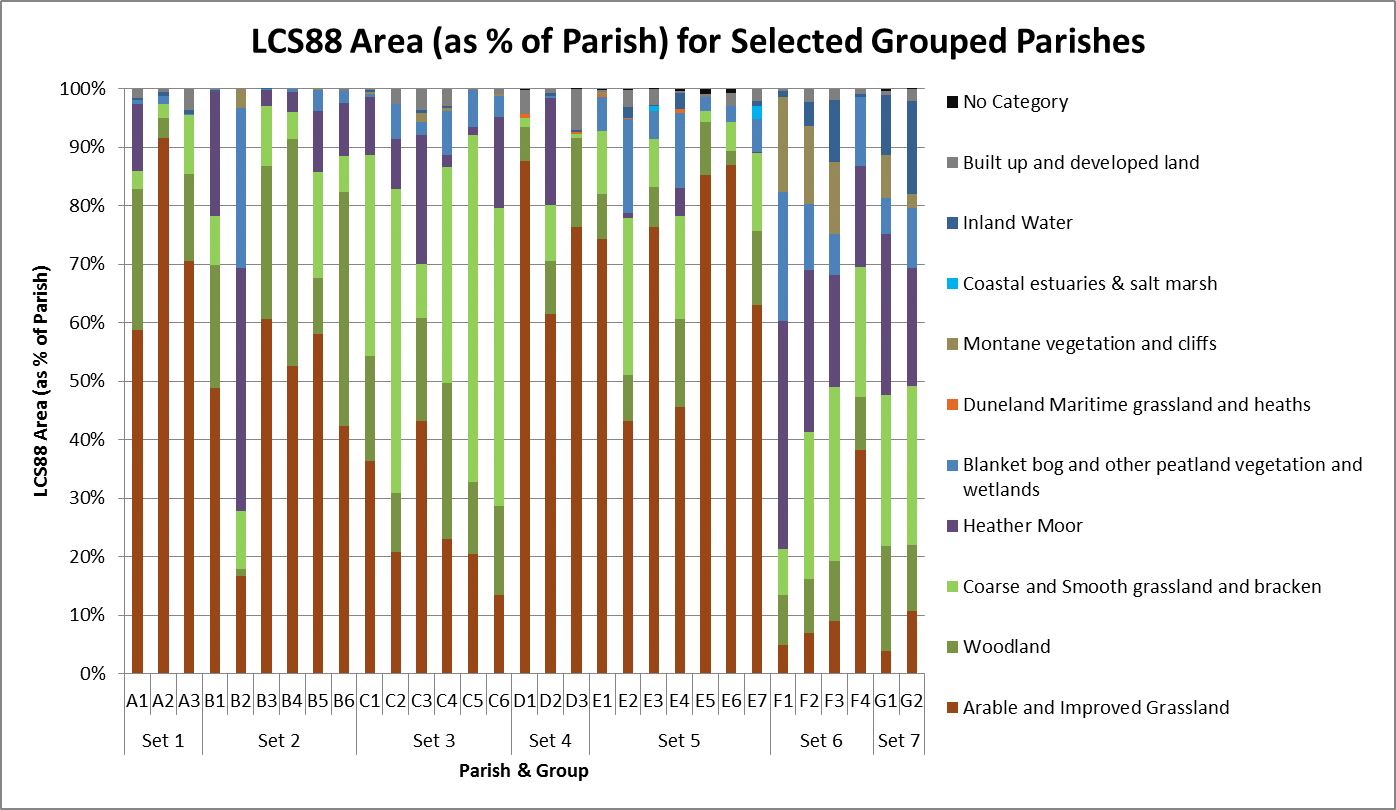
Peripherality (8 fold rural urban classification)
For each option parish, analysis of the Scottish Government's 8-fold Urban-Rural classification (2013-14) [61] was conducted to ensure that the chosen case study pairs included peri-urban, rural and remote rural areas as specified in the project objectives. The results are shown in Figure 23 where, with a few exceptions, there tend to be close similarities.
Less Favoured Area ( LFA)
The LFA map layer was intersected with each of Scotland's 891 agricultural parish boundaries. Using this LFA layer, a map of each option parish was created and the proportion of total area under each LFA category is provided in Figure 24. Again, this highlighted where there were similarities and differences between option parishes within sets.
Figure 23: Urban-Rural Classification (2013-2014) area as % of Parish for Option Parishes
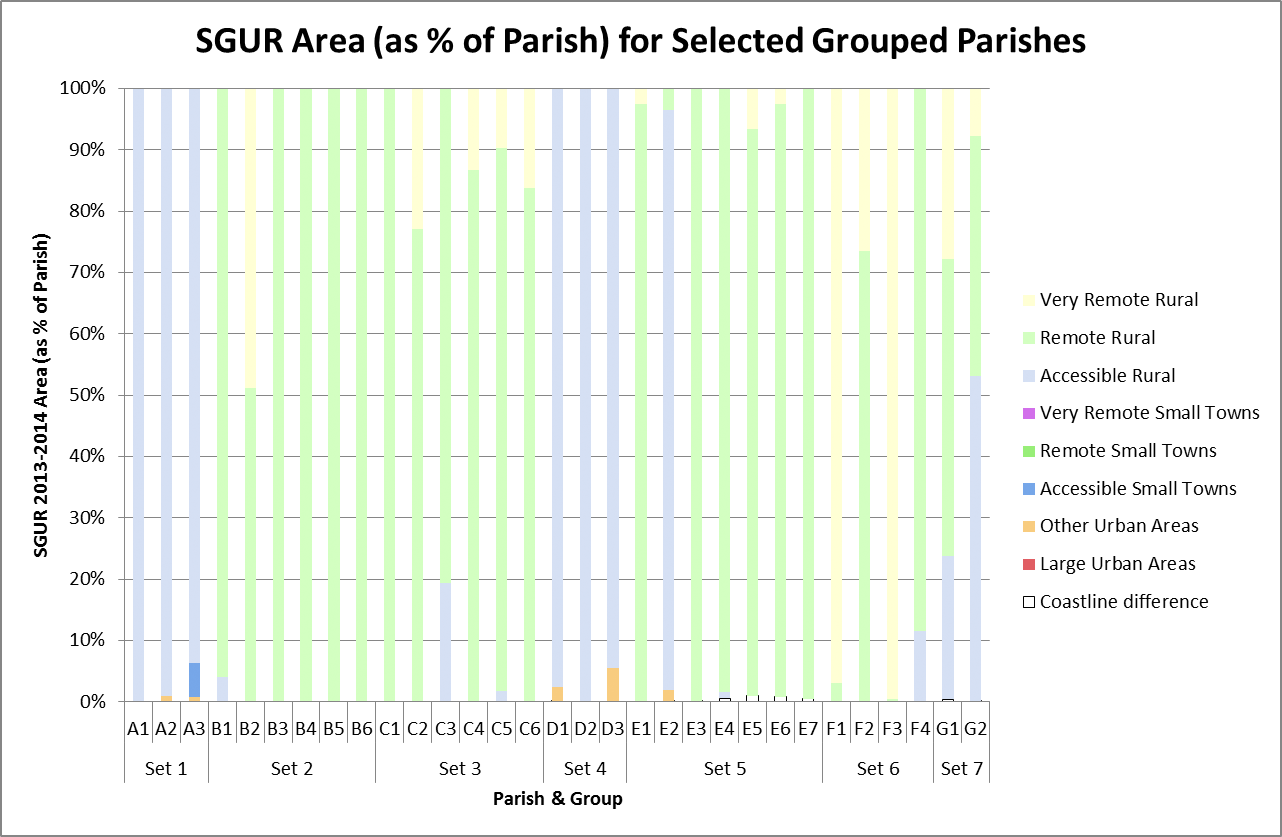
Figure 24 : LFA Area (as % of Parish) for Option Parishes
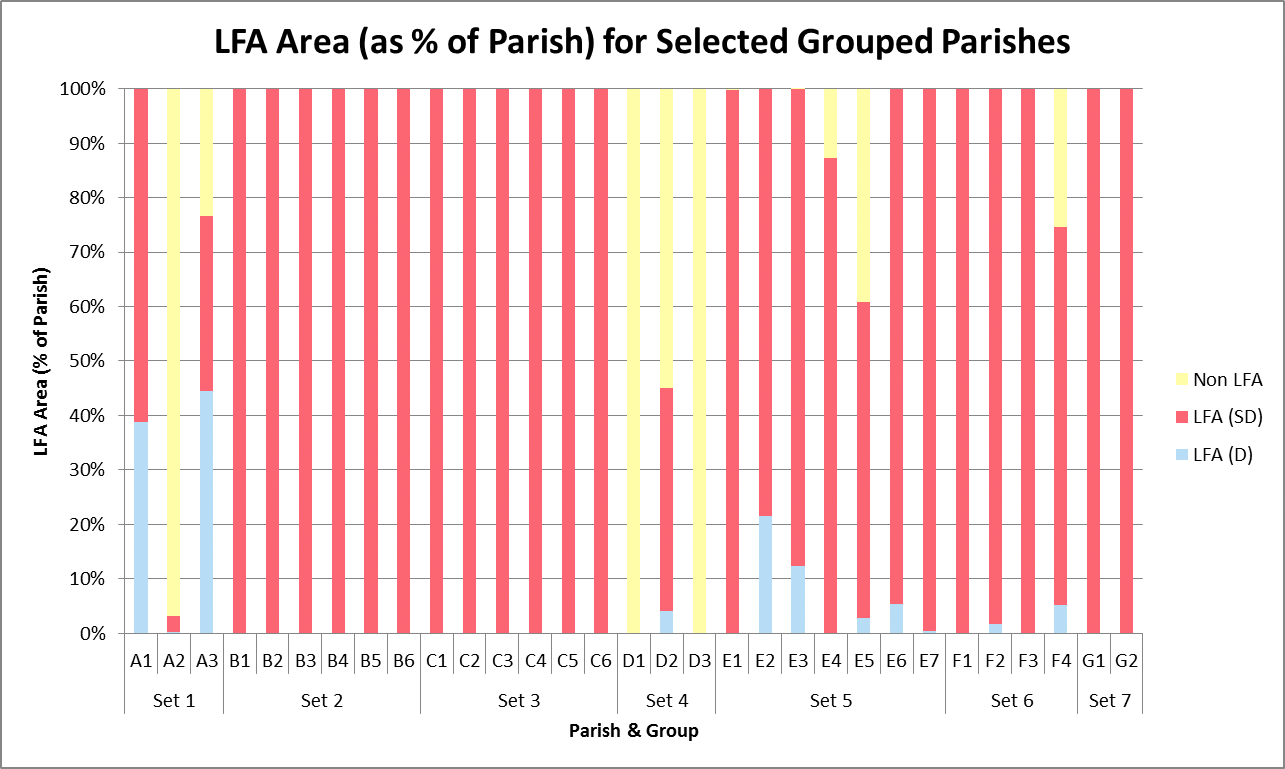
Agricultural Holdings
The number of agricultural holdings within each option parish was extracted from the Scottish Government's June Agricultural Census [62] . Figure 25 shows that within sets 1, 2 and 3 there were quite large differences in the number of agricultural holdings between some parishes, that may be a legacy of different ownership structures.
Figure 25: Count of Agricultural Holdings (2014) for Option Parishes - Anonymised
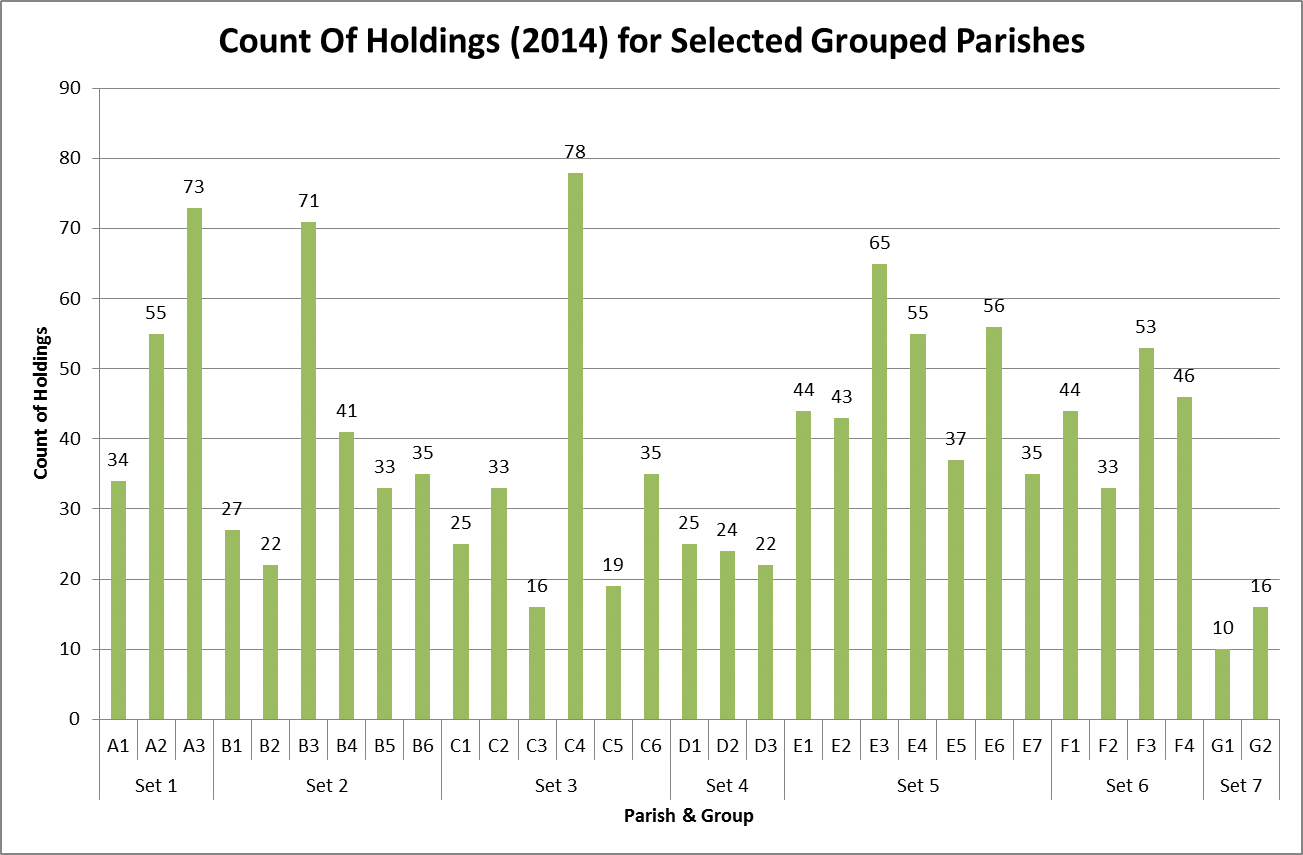
Contact
Email: Graeme Beale, socialresearch@gov.scot
There is a problem
Thanks for your feedback